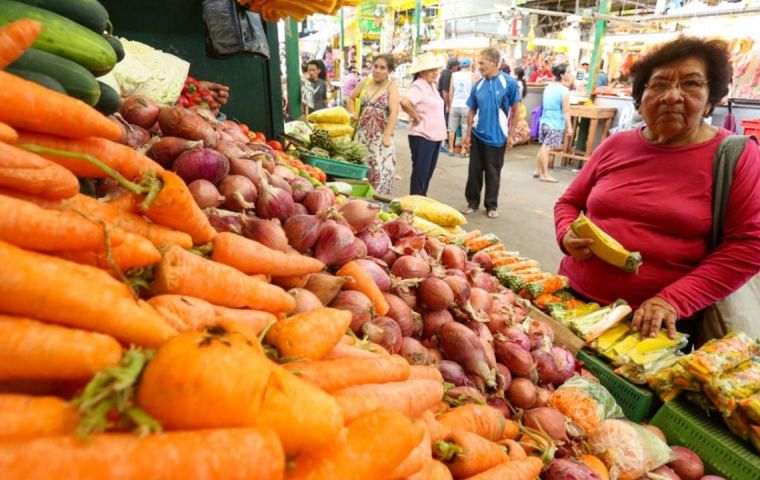Bolivia’s inflation reaches 0.9% in April

April’s figures were the lowest in seven months after blockades in October, coupled with unfavorable weather, Arandia explained
Bolivia’s inflation rose by 0.9% last month, bringing the cumulative rate for the first third of 2025 to 5.95%, the National Institute of Statistics (INE) reported Monday. These figures were significantly higher than the 1.31% recorded for the same period in 2024 and represented 79.3% of the government’s 7.5% annual target
Key price drivers included chicken (4.55%), bananas (6.33%), potatoes (3.64%), green peas (5.76%), and onions (3.30%). Cities like Tarija (1.93%), Sucre (1.14%), and Trinidad (1.10%) saw the highest price increases, with Cobija recording a 0.53% drop.
In this scenario, yoy inflation reached 15.01%. Meanwhile, the International Monetary Fund (IMF) projects a total of 15.8% for 2025, citing limited fiscal space and challenges from fuel shortages, protests, and floods impacting food production.
While the INE noted a downward trend in April due to stable fuel supply and no blockades, economists urged policies to control inflation amid economic strain and a projected GDP growth of only 1.1% this year and 0.9% in 2026.
INE Director Humberto Arandia highlighted that April’s figures were the lowest in seven months after blockades in October, coupled with unfavorable weather, further damaged the economy. Arandia also explained that rises in onions and beef were seasonally driven.
The current 79.3% official inflation has raised concerns about a possible overflow if factors pushing prices up persist. Last year, Bolivia closed with a cumulative inflation rate of 9.97%, the highest since 2008, far exceeding the government’s target of 3.60%.
Further fuel shortages cannot be ruled out, given the need for hard currency to finance imports. Following heavy rains and floods affecting food production and distribution, experts insist that effective public policies to control inflation and mitigate the effects of external and internal factors that put upward pressure on prices are needed in a largely subsidized economy.




